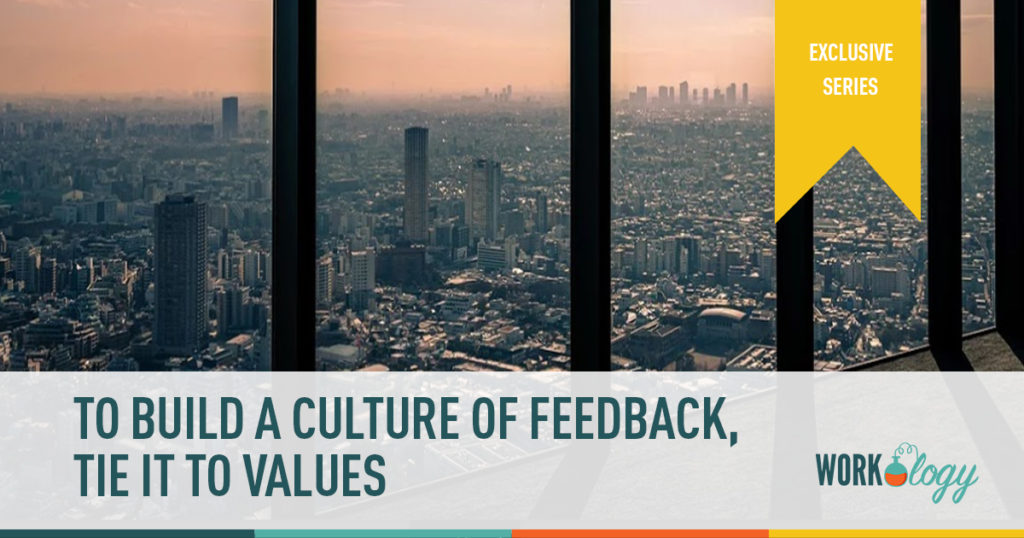As humans, our core values define and shape us and serve as internal beacons to guide our actions and behaviors. It is the same for any organization’s values. Values are vitally important to the ongoing culture and success of any company, so it’s necessary to actively bring those values to life in the form of operational practices.
To Build a Culture of Feedback, Tie it to Values
At my company, Betterworks, we believe in the power of a motivated workforce – it is what drives our product innovation, customer success and is core to our own corporate culture. And two of our values — People and Achievement — are closely linked with feedback.
Valuing Achievement means we regularly set stretch goals that benefit our customers and our business, and we focus on making progress towards them. Progressing towards these goals requires seeking out and embracing continual feedback from our teammates, managers, and the HR community at large. And because we also value People, we strive to both provide constructive feedback aimed at personal development, and to openly hear feedback directed toward us.
One of the main things any organization can do to nurture a motivated workforce is to foster a “culture of feedback” that features open communication and continuous, transparent feedback at all levels. When employees and their managers are able to trust and partner with each other, everyone is motivated to achieve today’s goals and to develop themselves to meet tomorrow’s challenges. Companies that are able to “build the muscle” of both giving and receiving continuous feedback are agile, aligned and motivated and can enjoy sustained competitive advantage.
Here are three important steps you can take towards building a strong feedback culture:
Don’t Just Talk About Performance, Talk More About Development
Words and labels are important, so you should reconsider how you talk about “performance management.” Instead of holding annual “performance reviews” or assigning employee “ratings,” focus on having more frequent, lighter touch conversations that focus on the value to the employee.
To many, the concept of giving and receiving feedback remains fundamentally uncomfortable.
That said, when HR is able to help managers and leadership move beyond their inexperience or discomfort and shift the focus of performance conversations to development, employees approach these conversations with far less tension and anxiety and are far more open to the feedback.
When it Comes to Giving Feedback, Apply the Golden Rule
I’ve worked with too many managers who feel uncomfortable providing feedback because they may fear the employee’s reaction or because they may struggle with putting their feedback into words. This leads to the perilous situation that Gallup describes, where almost half (47%) of employees receive feedback from their manager only a few times a year or less and just 23% found that feedback helpful to them improving their performance.
Every manager needs HR’s support because their ability to provide valuable feedback is critical to employee motivation, growth and retention. When supporting and coaching managers at remind them of another value, the Golden Rule: “do unto others as you would have them do to you.”
Feedback, when done correctly, doesn’t need to be a source of anxiety. Constructive feedback becomes a gift you can give to others and that others are able to provide back to you. This view of feedback may help managers move past the discomfort to have needed conversations with their employees. And when they do make the effort, employees will appreciate the effort being made towards their career development, strengthening the relationship and trust between them and their manager.
Keep Conversations Continuous
Every organization needs a workforce that is continuously learning, growing and developing so they can both meet today’s goals and be ready for tomorrow’s challenges. By making conversations around performance frequent and ongoing, your business is better able to review its priorities in light of progress and adapt to any changes that are needed. Plus, practice makes perfect, so providing more opportunities for everyone to both provide and receive feedback helps build that critical muscle.
A Continuous Performance Management process may sound more complex than an annual process, when done correctly, it’s actually easier, and the results to the business are worth it. In order to do continuous efficiently for the HR team as well as your managers and employees you need to support your unique program with robust HR software for Continuous Performance Management. When the technology can effectively support your organization’s unique program, you see higher adoption across all business teams and the benefits to the business are accelerated.









